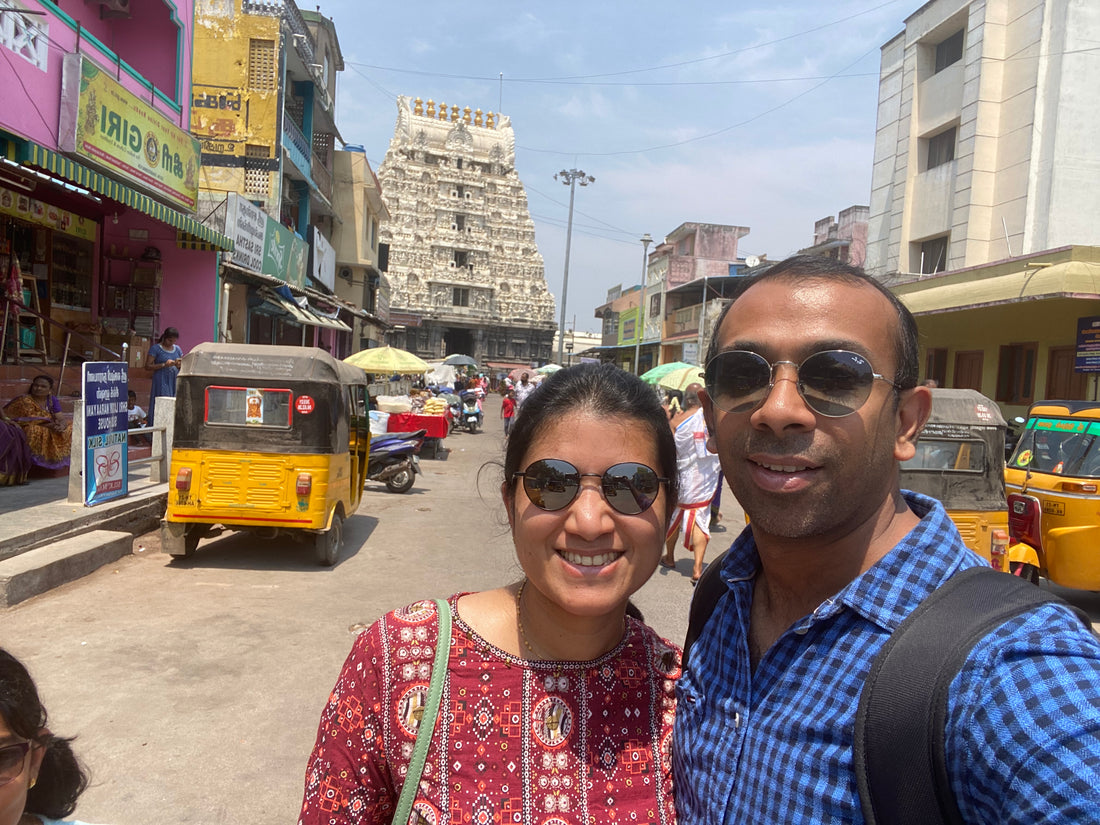
Our visit to Kanchipuram
Share
As an online saree seller, I had always heard about Kanchipuram's rich saree weaving industry and how it was the hub of traditional silk sarees in India. However, nothing could prepare me for the experience of actually visiting this city and seeing the art of saree weaving up close.
Kanchipuram is a small town located in the southern state of Tamil Nadu, India. It is known for its ancient temples, rich cultural heritage, and of course, its silk sarees. Kanchipuram silk sarees are known for their exquisite design, quality, and durability. They are one of the most sought-after sarees in India, and are often worn by brides on their wedding day.
My visit to Kanchipuram was eye-opening, to say the least. I was greeted by rows of shops selling sarees, each one more beautiful than the last. The colors, the designs, and the quality of the silk were unlike anything I had ever seen before. As I walked through the streets, I saw sarees being woven on handlooms by skilled weavers. I could hear the sound of the looms, and the rhythmic movement of the weaver's hands as they worked on the sarees.
I was fortunate enough to visit a saree weaving unit and witness the entire process of saree weaving from start to finish. The unit was a small, humble space with a few handlooms, and a group of weavers working diligently on the sarees. The process of saree weaving was fascinating to watch. It involved several steps, starting with the dyeing of the silk yarn to the final product.
The weavers first dyed the silk yarn in the desired color using natural dyes made from plants and minerals. They then carefully measured the warp and weft threads and set them up on the loom. The saree design was then sketched on a graph paper and transferred onto the warp threads. The weaver then began weaving the saree, taking great care to ensure that the design was perfect and the saree was of the highest quality.
The weaver used different techniques to create the saree's design, including weaving, embroidery, and zari work. The zari work, in particular, was impressive. It involved using thin threads of gold and silver to create intricate patterns on the saree. The weavers worked tirelessly on the sarees, often taking days or even weeks to complete a single saree.
The final product was breathtaking. The sarees were not just pieces of cloth but works of art. They were soft to the touch, with intricate designs and patterns that were unique to Kanchipuram sarees. As a saree seller, I was impressed by the quality of the sarees and the skill of the weavers.
My visit to Kanchipuram taught me a lot about the saree weaving industry and the importance of preserving traditional art forms. The saree weaving industry provides employment to thousands of weavers and is an integral part of Kanchipuram's economy. It is important that we recognize the value of these traditional art forms and support the artisans who create them.
In conclusion, my visit to Kanchipuram was a memorable experience that gave me a newfound appreciation for traditional silk sarees and the art of saree weaving. It was humbling to witness the skill and dedication of the weavers and to see how they create such beautiful sarees. I hope that this blog has given you a glimpse into the world of saree weaving and inspired you to appreciate the beauty of traditional art forms.
